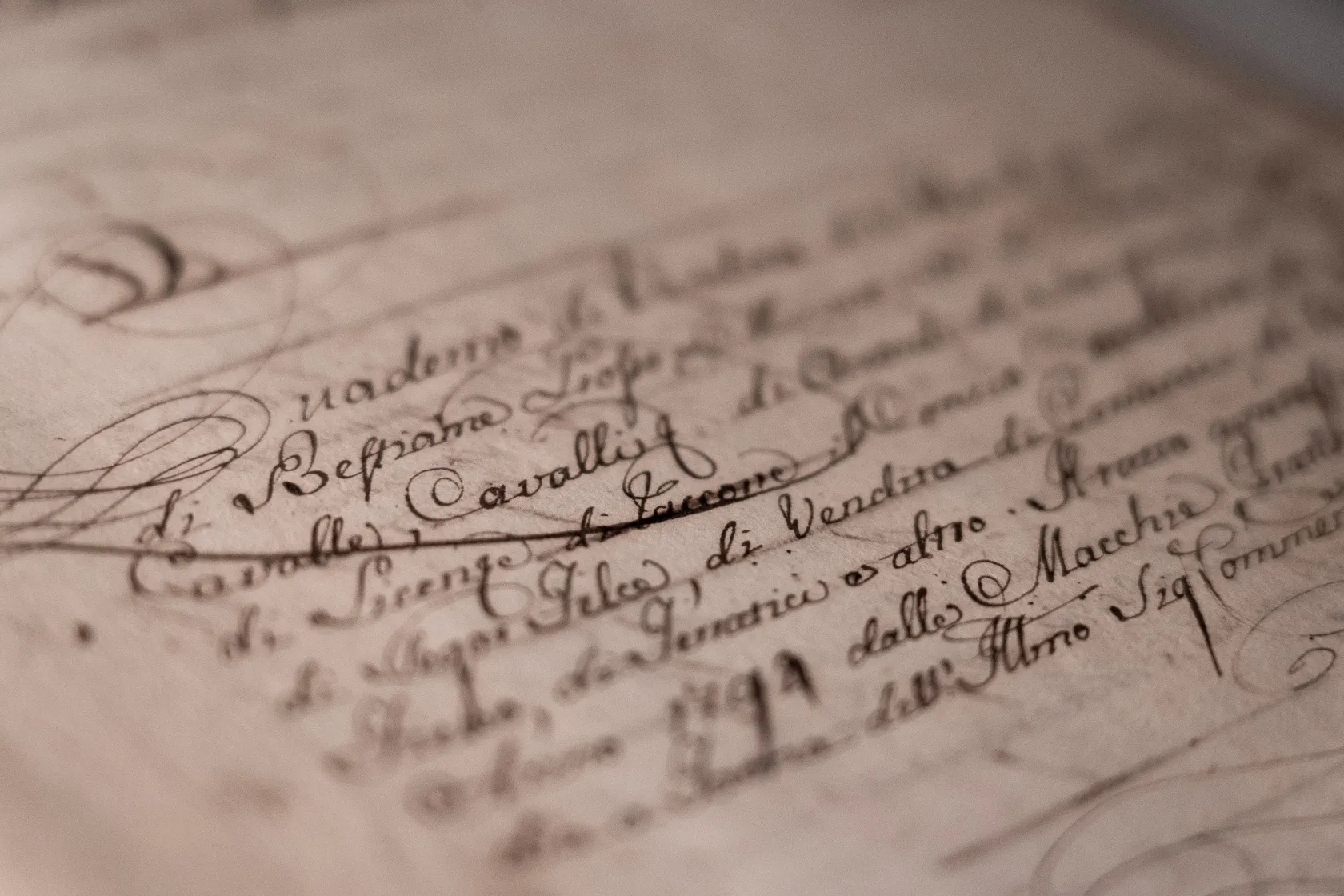
From Donatello to Alfa Romeo, All the Gems of the Library Archives
At a certain point in his life, Donatello was treated by a Florentine doctor, Giovanni Chellini, and in exchange for medical care he donated a bust of the Madonna, the now-famous Madonna Chellini. That doctor was the progenitor of what became known in the Florentine dialect as the Saminiatis, i.e. the family from San Miniato. That register dating back to the 15th century, which attests to the exchange which occurred between sculptor and doctor, is one of the many documents contained in the Saminiati-Pazzi collection, one of the 13 precious historical collections kept in the Bocconi Library's archives. In their totality, the archives amount to 600 linear meters of paper (834 boxes of correspondence, each of which contains several folders with dozens of letters each), providing a cross-section of the economic and entrepreneurial history of Italy from the 15th century to the end of the 20th century.
"The Saminiati-Pazzi collection," says Tiziana Dassi, head of the Bocconi archives and European Documentation Center, "is the oldest collection kept here and testifies to the commercial and business relationships of the Florentine family through medieval banking companies with numerous European cities, including Vienna, Amsterdam, London, Lyons, Paris and Krakow." A fundamental contribution to research, as a valuable and unique primary source. But the Saminiati collection, which was acquired in the 1930s thanks to the then professor of economic history Armando Sapori, is not the only gem existing in the basement of the Library.
Among the other archival fonds, there is that of the National Chamber of Italian Fashion, "with documentation from the foundation of the association in Rome in 1958 until the transfer to Milan in the 1980s and which includes correspondence between the stylists, the fashion houses and the association, sketches and even fabric samples." There is also the Giuseppe Luraghi Fonds, named after the Bocconi alumnus and president of Alfa Romeo between 1960 and 1974. This archive contains documents that Luraghi assembled for his thesis on aviation, but also lots of documentation on his role as a car executive. "Like the blueprints for the construction of the Alfa Romeo plant at Pomigliano d'Arco, as well as projects, sketches and many pictures of the period. This is a very important archival source for the history of Italian industry and public management."
Furthermore, the historical archives of La Rinascente department stores are also kept at Bocconi. They were collected by Umberto Brustio (who presided the company in the 1940s and 1950s), and thanks to the many photos of Milan it contains, the fonds testifies the history of the city in the early part of the 20th century and during post-war reconstruction. Last but not least, the Library guards the historical archives of Bocconi University. These contain the last letters Luigi Bocconi wrote his parents, before dying in Ethiopia, as well the first documents establishing the foundation of the University, in addition to the correspondence of Girolamo Palazzina, who was administrative director of the University for decades, and the photographic material coming from the Resti archives.
In short, a historical heritage that needs not only to be preserved, but also be made available to scholars and researchers: "We are doing this in both a national and international context," concludes Tiziana Dassi. "We are involved in a Horizon 2020 European project for the digitization and transcription of documents, which will also enable word searches to be carried out across these documents, thus making the historical evidence they contain usable and accessible."
